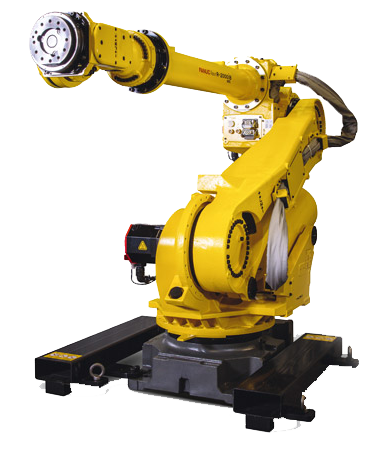Automation involves using various control devices or machines to perform manufacturing tasks with automatic control while reducing the need for human intervention. In the early years of industrial automation its purpose was to increase productivity and reduce operational costs. While these benefits still hold true today, the focus of automation has shifted to improving quality and flexibility in manufacturing. Advancements in automation technology have allowed for new innovations in manufacturing processes. Besides industrial robots, there are end of types of automation that exist. Logical programming and intelligent machines result in reliable, productive, and time saving manufacturing outcomes.
Industrial automation has been implemented across numerous industries in different forms to best suit industry needs. Automation systems are typically categorized into four types:
- 1. Fixed/Hard Automation - Fixed automation systems involve the use of fixed production or special purpose equipment in order to perform repetitive and fixed sets of operations or tasks. With fixed automation systems once they are implemented, they are very difficult to make production changes or design changes with. These systems can only handle one task and product type at a time and are very inflexible. However, since this type of automation is for one specific task, fixed automation systems can achieve high production rates and increase efficiency. Examples of fixed or hard automation systems include conveyors, machine transfer lines, distilled process, and automated assembly lines.
- 2. Programmable Automation - Programmable automation systems involve the use of automated or robotic equipment that is controlled through programming. With this type of automation, product or process changes are possible through the modification of the control program. Batch production processes with medium to high product volume are best for programmable automation.
The two most common machines used for programmable automation are NC machines and six axis robots. Numerically controlled (NC) machines, use computers to analyze and execute manufacturing operations like automated milling. Industrial robots are intelligent, durable, and versatile machines that are capable of performing numerous types of applications through programming. A robotic arm is controlled through program parameters for precise and accurate execution of specific tasks. The FANUC R2000ib can be programmed to repeatedly stack boxes onto pallets. While the FANUC LR Mate 200id can be programmed to transfer workpieces from one workstation to another. This type of automation is very effective when dealing with welding automation and robotic assembly. - 3. Flexible Automation - Flexible automation systems build upon programmable systems and include multipurpose CNC machines and industrial robots. These automation systems allow for greater flexibility for making adjustments to product and process changes. Operators are used to code in process changes into controlling computer programs. For instance, a FANUC Arcmate 120ic may be programmed for a plasma welding process but can be reprogrammed by an operator to change to plasma cutting tasks. Flexible automation is ideal for those with frequent production changes.
- 4. Integrated Automation - Integrated automation is a complete system that automates an entire manufacturing process through computer control. Independent machines, processes, and data all work together under the command of a single control system. Systems such as CAD (Computer Aided Design) and CAM (Computer Aided Manufacturing) are used to digitally plan products, layouts, parts, and the use of robots or other manufacturing machines. These systems are completely integrated together with scheduling and production control.

